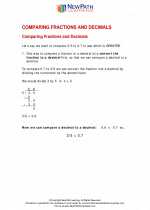Quadratic Equations
Quadratic equations are second-degree polynomial equations in a single variable of the form:
ax2 + bx + c = 0
where a, b, and c are constants, and "x" represents the variable. The highest power of the variable "x" is 2, which distinguishes quadratic equations from linear equations (power of 1) and cubic equations (power of 3).
Standard Form of a Quadratic Equation
The standard form of a quadratic equation is given by:
ax2 + bx + c = 0
where a, b, and c are constants, and "x" is the variable. The term "ax2" is the quadratic term, "bx" is the linear term, and "c" is the constant term.
Solving Quadratic Equations
Quadratic equations can be solved using various methods, including:
- Factoring: If the quadratic equation can be factored into two binomial factors, the roots (solutions) of the equation can be found by setting each factor equal to zero.
- Completing the Square: This method involves transforming the quadratic equation into a perfect square trinomial and solving for the variable.
- Quadratic Formula: The quadratic formula provides a direct method for finding the roots of a quadratic equation, given by:
x = (-b ± √(b2 - 4ac)) / (2a)
Study Guide
To effectively understand and solve quadratic equations, it is important to focus on the following key concepts and skills:
- Understanding the Standard Form: Be able to identify the quadratic, linear, and constant terms in a quadratic equation.
- Factoring Quadratic Equations: Practice factoring quadratic expressions and solving for the roots using the factored form.
- Completing the Square: Learn the process of completing the square to solve quadratic equations and express them in vertex form.
- Applying the Quadratic Formula: Understand how to use the quadratic formula to find the roots of a quadratic equation, and practice applying the formula to different types of quadratic equations.
- Graphing Quadratic Equations: Explore the graphical representation of quadratic equations, including identifying the vertex, axis of symmetry, and the direction of opening of the parabola.
By mastering these concepts and skills, you will develop a strong foundation in solving and understanding quadratic equations.
.◂Math Worksheets and Study Guides Fifth Grade. Less Than, Greater Than

 Worksheet/Answer key
Worksheet/Answer key
 Worksheet/Answer key
Worksheet/Answer key
 Worksheet/Answer key
Worksheet/Answer key
